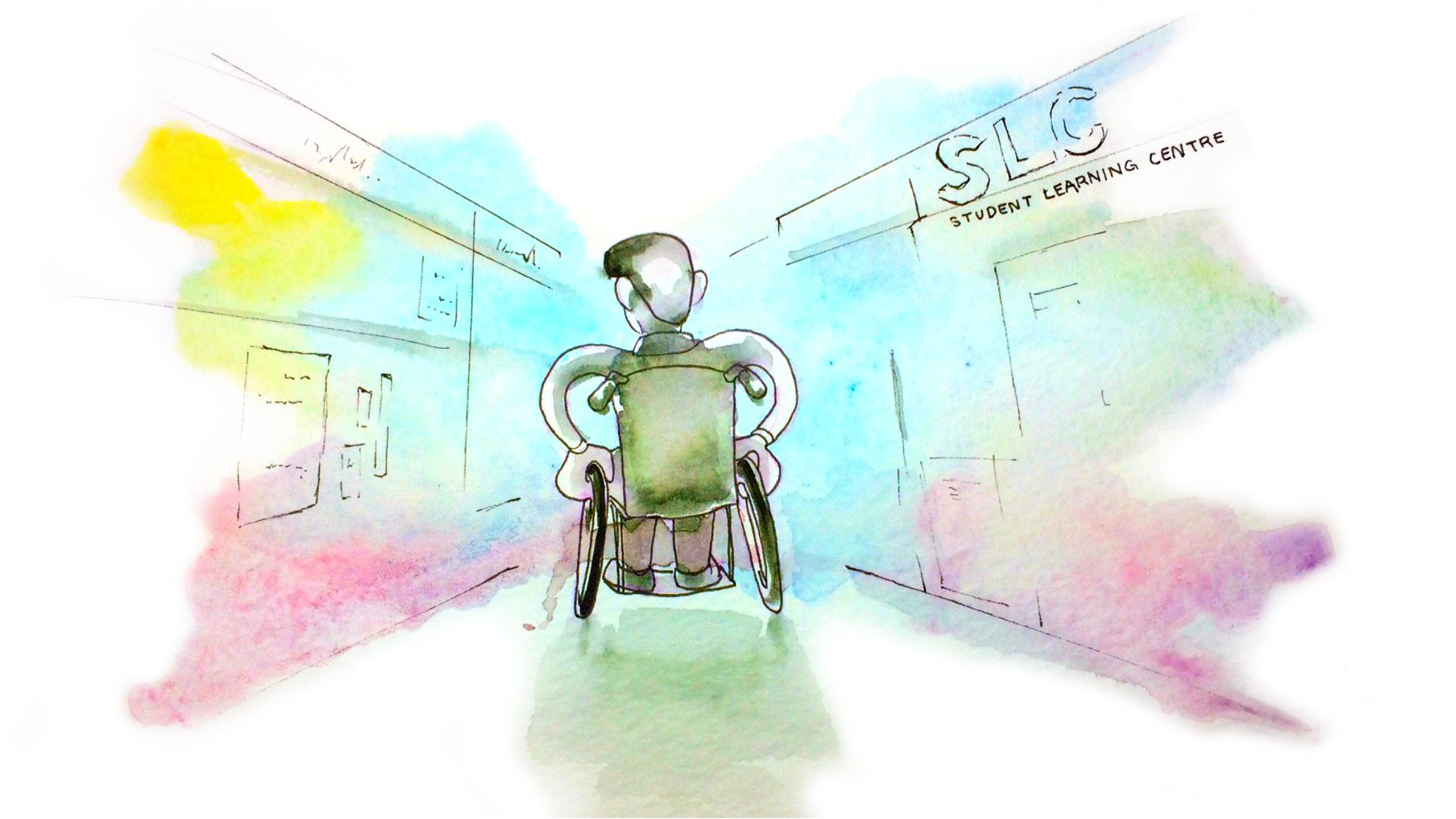By Matt Vocino
Tens of thousands of students will start navigating nearly 50 buildings at Ryerson University in September. And although many won’t think twice about physically moving about the buildings that make up our campus, I will.
Getting around stairs and small spaces isn’t always easy for someone like myself who is physically disabled and uses a power wheelchair. Founded as the Ryerson Institute of Technology in 1948, central buildings like Kerr Hall weren’t built with accessibility in mind.
As a Radio and Television Arts (RTA) Sports Media student heading into fourth year, I’ve spent the last three years figuring out which buildings are accessible, and which ones I should avoid. Here’s my list of the most—and least accessible buildings on campus.
Most Accessible
1. Student Learning Centre
I’ve found the Student Learning Centre (SLC) to be the most wheelchair-friendly building on campus —despite the building receiving a failing grade for accessibility due to the challenges posed to visually impaired students by disability advocate David Lepofsky in 2017.
The entrance alone makes the building, the architectural masterpiece built in 2015 located at the corner of Yonge and Gould streets, the most accessible one on campus. The winding ramp allows me to easily navigate on my own and has an elevator at street-level that allows me to reach the main doors, which can be opened with bang-bars when the ramp is blocked. The building’s spacious floors and study rooms feature adjustable desks and social spaces, like the popular “beach” floor, on level six have a winding ramp.
2. Mattamy Athletic Centre
A few blocks north of the main campus, on Carlton street, the Mattamy Athletic Centre (MAC) comes in second place. It opened in 2012, with a grand foyer that has two elevators that can easily fit a couple of wheelchairs. The three levels above have accessible features too.
There are designated viewing spots—two on the second floor basketball court and four in the hockey arena—for the physically disabled. The Rams Café has a number of tables perfect for the wheelchairs users, the gym is accessible and the main information desk has a low point for people sitting in a wheelchair to be serviced.
Moving your way through Rye with mobility challenges
Being an RTA student, I’ve been lucky to have most of my classes at the Rogers Communications Centre (RCC) at Church and Gould streets over the last three years. There are bang-bars on almost every door, the classrooms are spacious and the building is connected to Kerr Hall via the bridge, which makes getting to classes bearable during the winter months.
Even though it’s on my list, the RCC’s accessibility is limited. Accessibility isn’t just about having access to spaces, it’s also about inclusivity and equal opportunities for staff and students with mobility needs. There are countless tables scattered throughout the RCC and they’re all relatively high, so I can’t sit and have a face-to-face conversation with my friends.
Least Accessible
The Rest of Ryerson
I’d rather be at the SLC, MAC or RCC than anywhere else on campus—especially over Kerr Hall. The brown brick building that wraps around the Quad is a navigational nightmare. There are only three elevators, meaning that detours are often necessary for wheelchair users. I avoid the 200-metre stretch that connects the RCC and SLC at all costs.
Accessible features in and around Ryerson’s buildings are part of what attracted me to the university, yet staff and students with mobility issues continue to face barriers to this day. Not all indoor rooms open with a button, so people with mobility challenges can’t always access a classroom on their own. Most classrooms aren’t suitable for disabled students either, since they don’t have desks wheelchair users can easily pull up to. Because of these barriers, it’s become tough for myself and other physically disabled people to get across campus. Thankfully, groups like Access Ryerson are always looking to help the community members at Ryerson. Their intiatives and ultimate goal of working towards making the school fully accessible has helped people (such as myself) to get around. In any case, all I can hope is that sooner, rather than later, the campus will be 100 per cent barrier-free.











Leave a Reply